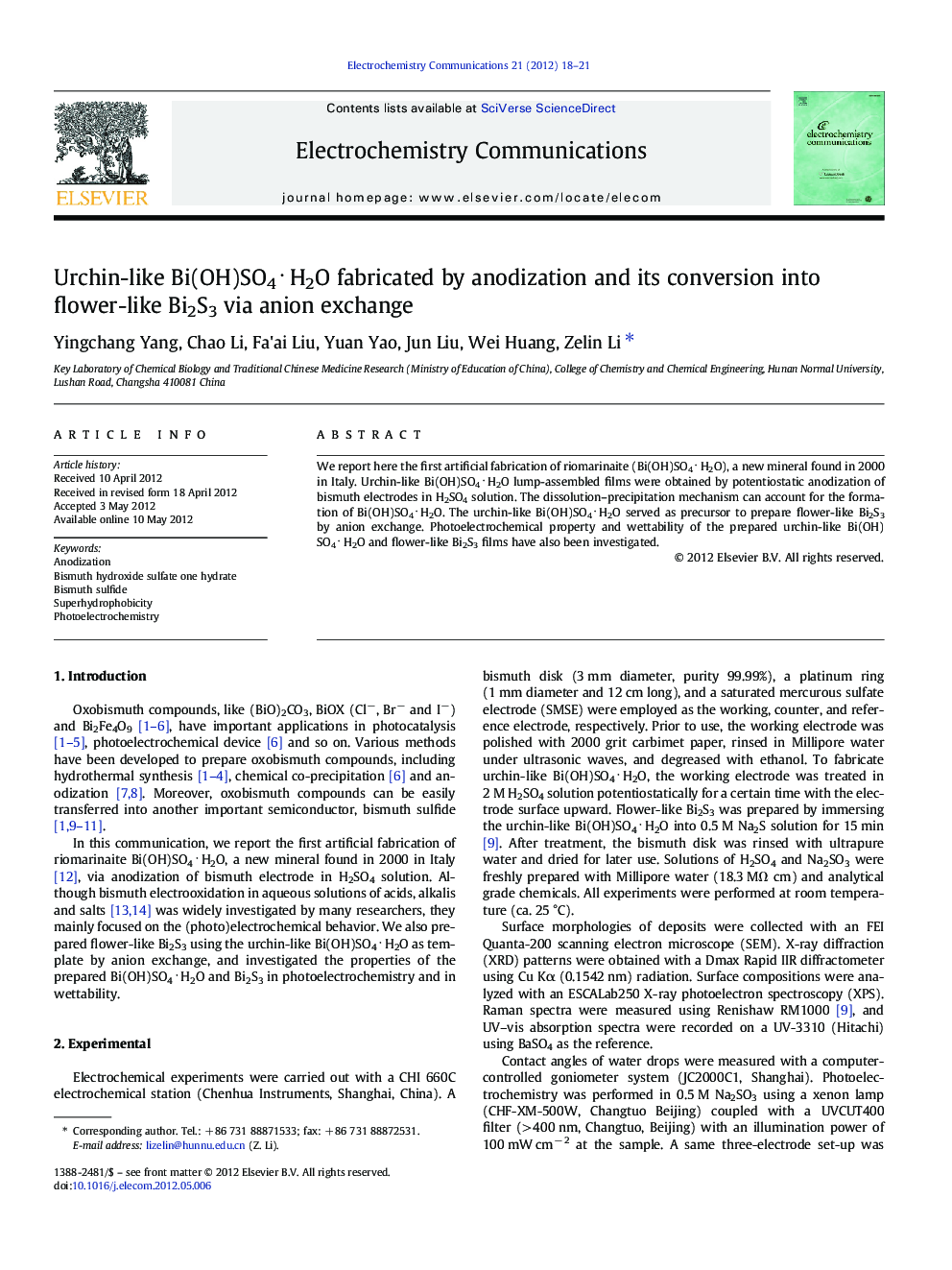| Article ID | Journal | Published Year | Pages | File Type |
|---|---|---|---|---|
| 179439 | Electrochemistry Communications | 2012 | 4 Pages |
We report here the first artificial fabrication of riomarinaite (Bi(OH)SO4 ⋅ H2O), a new mineral found in 2000 in Italy. Urchin-like Bi(OH)SO4 ⋅ H2O lump-assembled films were obtained by potentiostatic anodization of bismuth electrodes in H2SO4 solution. The dissolution–precipitation mechanism can account for the formation of Bi(OH)SO4 ⋅ H2O. The urchin-like Bi(OH)SO4 ⋅ H2O served as precursor to prepare flower-like Bi2S3 by anion exchange. Photoelectrochemical property and wettability of the prepared urchin-like Bi(OH)SO4 ⋅ H2O and flower-like Bi2S3 films have also been investigated.
Graphical abstractUrchin-like Bi(OH)SO4 ⋅ H2O was prepared by potentiostatic anodization of bismuth electrodes in 2 M H2SO4 solution, and it served as precursor to prepare flower-like Bi2S3 by anion exchange.Figure optionsDownload full-size imageDownload as PowerPoint slideHighlights► First artificial fabrication of Bi(OH)SO4 ⋅ H2O by potentiostatic anodization of Bi. ► Urchin-like structure formed by the electrodissolution–precipitation mechanism. ► Urchin-like Bi(OH)SO4 ⋅ H2O was transformed into flower-like Bi2S3 by anion exchange. ► Repeatable anodic photocurrent was observed on these two materials. ► The flower-like Bi2S3 film demonstrated superhydrophobicity without any modification.
